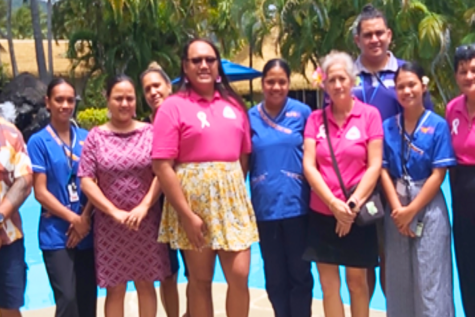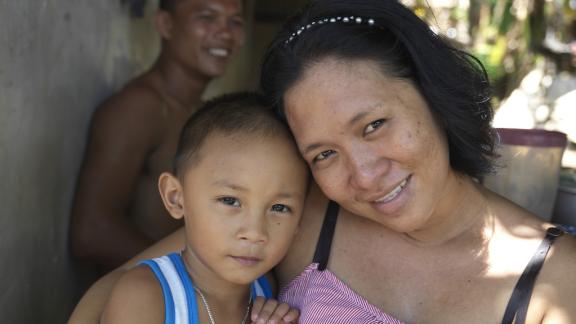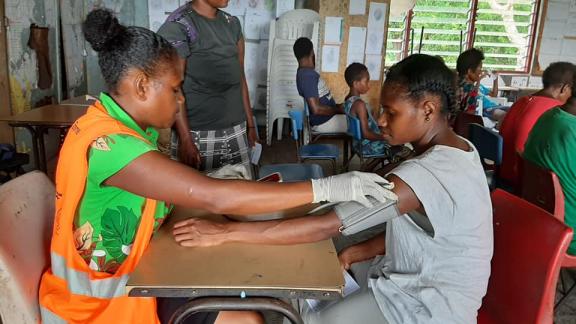Spotlight
A selection of resources from across the Federation

Cook Islands, New Zealand
Ora’anga Meitaki no te Vainetini: Cook Islands Women’s Wellbeing in the Context of Abortion
In 2022, research on abortion, including unsafe abortion, in Cook Islands was conducted by the University of New South Wales, University of the South Pacific Cook Islands Campus Te Puna Vai Mārama | Centre for Research, and Cook Islands Family Welfare Association (CIFWA). Ora’anga Meitaki no te Vainetini: Cook Islands Women’s Wellbeing in the Context of Abortion includes the lived experiences and stories of women, advocates, support persons and health workers in the Cook Islands and Aotearoa New Zealand.
Filter our resources by:

| 31 October 2018
Niu Waves – October 2018 - Newsletter from the Sub-Regional Office for the Pacific
Catch up on the latest sexual and reproductive health news from the Pacific with Niu Waves, the monthly newsletter from the Sub-Regional Office for the Pacific (SROP). Each month, SROP compiles key news and events from Member Associations across the Pacific and the sub-regional office to inspire and educate. Browse our latest issues here. For more information or to be added to the distribution list, please email [email protected].
| 30 September 2018
Niu Waves – September 2018 Newsletter from the Sub-Regional Office for the Pacific
Catch up on the latest sexual and reproductive health news from the Pacific with Niu Waves, the monthly newsletter from the Sub-Regional Office for the Pacific (SROP). Each month, SROP compiles key news and events from Member Associations across the Pacific and the sub-regional office to inspire and educate. Browse our latest issues here. For more information or to be added to the distribution list, please email [email protected].

| 05 June 2018
Overprotected and Underserved: The influence of Law on Young People's Access to Sexual and Reproductive Health in Malaysia
This report presents the finding of the study that explored youth’s and health service providers’ knowledge, perceptions and understanding of various areas of law; and how these affects young people’s access to sexual and reproductive health (SRH) services in Malaysia. The report has confirmed that laws, socio-cultural norms, religious beliefs play critical roles directly or indirectly in young people’s access to sexual and reproductive health services in Malaysia. Understanding and acknowledging the influence of laws, religion, and culture would improve young people’s access to sexual and reproductive health in Malaysia. In recent years there has been a growing interest amongst advocates for sexual and reproductive rights in the interplay between legal frameworks and access to protections and services. This research project contributes to efforts to build evidence and knowledge in this area, to guide future advocacy and programming work, with the ultimate aim of promoting and protecting young people’s sexual and reproductive rights.

| 04 June 2018
Financial Statements 2017
The overall group income of IPPF has risen by US$3.1 million (3%) to US$102.4 million (2016: US$99.2 million). Unrestricted total income rose by US$4.1 million and restricted income fell by US$1.0 million. IPPF’s main source of funding is government grants, which account for 82% (2016: 79%) of total income. In 2017 unrestricted government funding increased by US$1.4 million (2%) to US$67.4 million. The main reason for the increase was the increase in funding from the Scandinavian countries (Norway US$9.1 million, Sweden US$ 4.8 million and Denmark US$ 4.0 million) to assist in bridging the funding gap caused by the impact of the Global Gag Rule and the loss of UK government funding. Restricted government funding amounted to US$16.8 million, up from US$12.1 million in 2016. The Government of Australia continued to provide support (US$3.6 million) in relation to the global SPRINT Initiative to provide sexual and reproductive health services to crisis and post crisis areas in South East Asia, the Paci c, South Asia, and Africa and to help fund our Fiji office which supports Paci c MAs. USA provided US$6.7 million of funding for a number of programmes. The Government of Japan provided US$1.8 million for work on integration of SRHR and HIV and AIDS and humanitarian assistance for internally displaced people in Syria and refugees in Jordan and Lebanon.The Government of Germany US$0.2 million to improve access to promote sexual reproductive health services in Syria and to displaced persons in Sudan. The governments of the Netherlands, Norway and an anonymous donor also provided funding of US$3.7 million to the Safe Abortion Action Fund. Grants from multilateral donors and other sources decreased by 24% from US$20.6 million to US$15.8 million. A signifcant factor in the decrease was US$3.1 million from Bill and Melinda Gates Foundation, US$2.7 million UN Programme on HIV/AIDS and US$0.4 million from the David and Lucile Packard Foundation as some current projects came to an end.









